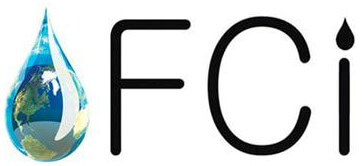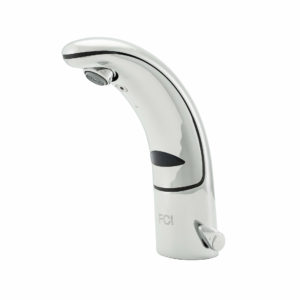Summary: Touchless bathroom faucets have replaced traditional taps in most public spaces, commercial establishments, and new homes too. The advantages of switching to touchless bathroom faucets far outweigh any of the drawbacks. Ultimately, hygiene, water conservation, accessibility, and a positive user experience are good reasons to switch to automatic faucets.
Hand-washing is a highly practiced routine—one that we learn very early in life:
First, turn the handle on the tap, let the water flow over your hands, use some soap, and lather well (that’s the part kids enjoy the most as they see bubbles rise!). Next, rinse thoroughly, shut the tap (making sure the water stops completely), and wipe your hands dry.
Hand-washing remains a crucial routine for healthcare. With regular viral outbreaks across the globe, it has, in fact, assumed even more importance.
What’s changed?
Now we have medical experts telling us how to wash our hands instead of our parents! In addition, we have specific instructions to wash our hands continuously for 20 seconds, several times a day. Technology has entered the scene, and most of us now use touchless faucets in our bathrooms—so there’s no turning the tap handles anymore!
Touchless bathroom faucets have replaced traditional taps in most public spaces, and discerning homeowners prefer to use touchless faucets in their homes too. Clearly, they see the advantages of switching to touchless technology.
The top 3 advantages of switching to touchless bathroom faucets
Hygiene and water conservation remain two of the most important reasons to switch to automatic faucets. Aesthetics is an additional factor that we at Faucets Canada believe is another reason to switch to automatic faucets
#1 Automatic faucets are more hygienic
Faucet handles are a breeding ground for germs. Touching the handle after washing your hands can re-contaminate your hands, undoing the hygiene advantage of washing your hands in the first place.
Automatic bathroom sink faucets eliminate the physical contact required to operate the tap. No more touching the handle that was touched by others who used it before you! That means no cross contamination. Eliminating physical contact with publicly used surfaces is critical to stopping community transmission of infections.
The hygiene advantage of touch-free faucets is not limited to public restrooms. Hand-washing stations in commercial establishments like hospitals, surgical areas, food preparation factory units, and restaurant kitchens also benefit from switching to automatic, sensor-based faucets to prevent contamination and disease transmission.
FCI is Canada’s favourite touchless faucets brand, integrating research and engineering with state-of-the-art manufacturing and modern designs to deliver high-quality touchless faucets.
We believe that a faucet must naturally be aesthetically pleasing, but the most important details are on the inside. That’s why we create automatic faucets featuring inspiring styles and extraordinary finishes.
Take a look at the range of automatic faucets in our online store.
#2 Touchless faucets save water
According to the Safe Drinking Water Foundation, a Canadian charity organization, leaving the tap running while washing your hands uses about 8 litres of water. A leaky faucet that drips once per second can waste 10,000 litres of water in one year.
Many people leave the tap running while washing their hands, brushing their teeth or shaving. For example, imagine everyone scrubbing their hands for at least 20 seconds for optimal hand hygiene—if taps are left on while washing, we’re wasting a lot of water!
It is critical to find ways to save water, and that is one of the main advantages of switching to touchless faucets.
We can reduce our water consumption by up to 20% by switching to water-efficient fixtures.
Educating people about turning off the taps is essential, but regulating this behaviour in public places is impossible.
Installing sensor-based automatic faucets with auto-shut-off and low flow rates is the best way to save at least some part of the water.
Touchless faucets are designed to operate for a preset time when a user’s hands are in the active area. They use approximately 3.8 L (1 gal) less water than manual faucets.
FCI’s automatic faucets have a preset, regulated water pressure, flow rate and response time. Switch to an FCI automatic faucet and save on water bills in your workspace or home. You’ll wonder why you didn’t switch to touchless earlier! Choose from our range of wall-mounted, decktop, curved and goose-neck faucets.
#3 Touchless bathroom faucets are aesthetically superior
What looks good feels good! We’re long past the age in which bathrooms were considered a mere utility. We want a luxurious experience in the bathrooms in our homes. In commercial settings like offices, hotels and restaurants, aesthetics is important and goes a long way toward boosting the facility’s overall image and providing customers with a positive experience. In public restrooms, aesthetically pleasing automatic fixtures raise the public’s confidence that the facility is well-looked after and hygienically maintained.
Automatic faucets have other advantages, too—they’re child-proof and family-friendly and more accessible for people with disabilities.
But many consumers still have questions about whether to switch from manual to automatic faucets.
Are they worth the higher initial investment? Are they easy to install and maintain? And are there plugs on the premises to supply power!
Are there any drawbacks to switching to touchless faucets?
While there are no real drawbacks to touchless technology, some points are worth remembering when you switch to touchless, so you can effectively educate users and get them used to sensor-based faucets.
- Some people, especially seniors and children, may get confused when they don’t see a handle to operate the faucet. It helps to put up graphic signage to indicate how to activate the water flow.
- Remember that automatic faucets supply premixed cold and hot water, and users cannot adjust the temperature themselves. However, this feature prevents accidental scalding with very hot water if users are not careful in mixing the hot and cold water options on manual faucets.
- Another issue that sometimes occurs is that the sensor is triggered accidentally, either by a reflection from a mirror or light or by pets such as cats walking across the faucet sensor’s active area. Since there is an auto shut-off feature, you don’t have to worry about too much water wastage as the automatic faucet will turn itself off.
- Lastly, automatic faucets that are battery-operated can become unresponsive when the batteries run out. Those that use hardwired power will not work in case of a power failure. However, the batteries are easy to change and don’t require a plumber to reactivate the faucet. And power failure is a rare occurrence, so you needn’t worry about that eventuality either!
In the final analysis
The advantages of switching to automatic faucets far outweigh any of their drawbacks. Ultimately, hygiene, water conservation, accessibility, and a positive user experience are good reasons to switch to touchless bathroom faucets.
Speak with our consultants at Faucets Canada Inc. to learn more and pick an automatic faucet design suitable for your needs.







